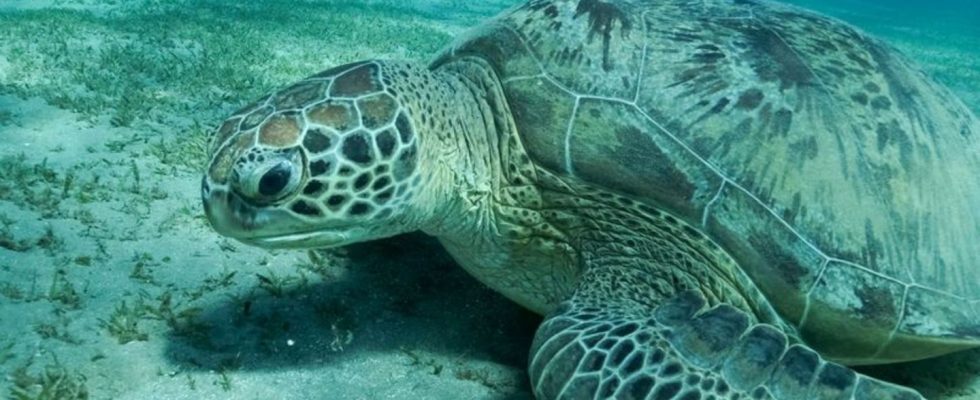Nature
UN report sees serious threat to migratory animal species
A green sea turtle (Chelonia mydas) swims in the Red Sea. Sea turtles are migratory species. photo
© Andrey Nekrasov/Zuma Press/dpa
Many people are fascinated by the long migrations of some animals. But many such species are in danger. The situation in the sea is particularly explosive, for example with migrating sharks and rays.
The conservation status of only 14 such migratory species has improved, including blue whales, humpback whales and sea eagles. The first report on the status of migratory species was published by the Secretariat of the Convention on the Conservation of Migratory Species of Wild Animals (CMS) in Bonn and presented at a UN meeting in Samarkand, Uzbekistan.
Threats from climate change
The 14th CMS conference began there on Monday under the motto “Nature knows no boundaries”. Government representatives, scientists and conservationists will discuss the challenges for nature conservation with regard to migratory birds and migratory land and marine animals until February 17th. It is also about the threats they face from fishing, habitat loss and climate change.
Billions of animals undertake migrations on land, sea and air every year, crossing national borders and continents, with some traveling thousands of miles across the globe in search of food and mating partners. These include salmon and sea turtles, storks and terns, wildebeest and elephants.
“If they are gone, they will not return”
Things are particularly bad with fish populations: almost all – 97 percent – of the fish species listed under the CMS are threatened with extinction. These included migratory sharks, rays and sturgeons, whose populations have declined by 90 percent since the 1970s. The two biggest threats to migratory species are excessive exploitation, such as fishing, and habitat loss due to human activity. Climate change, pollution and invasive species would also have major negative impacts.
The global community must act now, demanded Inger Andersen, Executive Director of the United Nations Environment Program (UNEP). “Given the precarious situation of many of these animals, we cannot afford to delay and must work together to turn the recommendations into reality.” Migratory species played an essential role in maintaining the world’s ecosystems by pollinating plants, transporting important nutrients, controlling pests and helping to store carbon.
On the first day of the conference in Samarkand, Andersen called for a multilateral approach to ensure the conservation of migratory species. “If they are gone, they will not return,” she warned, adding: “If they survive, we – humanity – will also survive and thrive.”
Some of the report’s findings are alarming, said CMS Executive Secretary Amy Fraenkel. “The good news is that we know what needs to be done to reverse this situation.” She pointed out that among migratory animal species there are some of the most iconic and intelligent species, with complex social structures. These included elephants and great apes as well as dolphins and several species of whales.
The report focuses on 1,189 animal species recognized by CMS Parties as worthy of international protection. But it also contains information on over 3,000 other migratory species.

